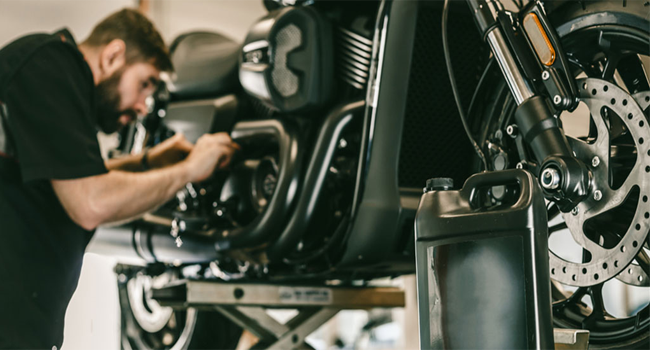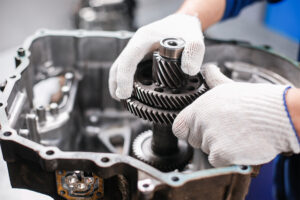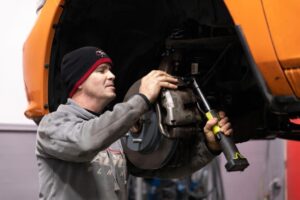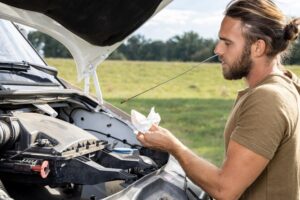
DIY engine repair techniques for 2024
As we enter 2024, the field of DIY motorcycle repair is rapidly evolving, with new technologies, tools and techniques emerging. Whether you’re an experienced mechanic or a novice, understanding these changes can save you time and money while improving your skills. This guide delves into the essentials of DIY motorcycle repair and gives you the knowledge and insights to tackle your challenges with confidence.
Understand the basics of motorcycle mechanics
Before making any repairs, it is critical that you understand the anatomy and function of your engine.
Major components of the engine
An engine consists of several major components, including the cylinder block, pistons, crankshaft and camshaft. Each plays a crucial role in the operation of the engine, converting fuel into mechanical energy.
How the engine works
The engine works on the principle of internal combustion, where fuel and air are mixed and ignited, creating a series of controlled explosions. These explosions generate the energy needed to move the vehicle.
Tools and equipment needed for DIY engine repair
Having the right tools is crucial for successful DIY engine repairs.
Essential tools for beginners
Beginners should have basic tools such as wrenches, screwdrivers and pliers. A quality torque wrench and socket set is also critical for engine work.
Advanced tools for experienced technicians
Experienced technicians can invest in more advanced tools such as engine hoists, compression testers and electronic diagnostic equipment to solve complex repair problems.
Preparing engine repairs
Good preparation guarantees the safety and efficiency of the restoration process.
Safety first: protective equipment and precautions
Wearing protective equipment such as gloves, goggles and overalls is essential to prevent injury. Also make sure your work area is well ventilated and free of flammable materials.
Set up your workspace
A clean, organized workspace, good lighting, and easy-to-use tools can greatly improve the repair experience.
Common engine problems and diagnoses
Identifying and diagnosing engine problems is a crucial skill for any DIY mechanic.
Identify common problems
Common engine problems include overheating, oil leaks and misfires. Learning to recognize these symptoms early can help prevent more serious problems from developing.
Use diagnostic tools
Diagnostic tools such as an OBD-II scanner can help you identify the specific problems your engine is facing and guide your repair efforts.
Step-by-step guide to DIY engine repair
Successful engine repair follows a structured approach, from assessment to execution.
Basic maintenance procedures
Basic repairs may include changing the oil, replacing spark plugs, or installing a new air filter. These tasks require minimal tools and are perfect for beginners.
Advanced restoration technology
More complex repairs, such as replacing the cylinder head gasket or rebuilding the engine, require a deeper understanding of the engine’s mechanics and require more specialized tools.
Engine maintenance tips to prevent future problems
Regular maintenance is critical to extend engine life and avoid expensive repairs.
Regular maintenance plan
To keep your engine running smoothly, follow a maintenance schedule that includes regular oil changes and filter changes.
Tips to improve performance
In addition to basic maintenance, consider performance improvements such as upgrading your air intake system or using higher quality lubricants.
The role of technology in DIY motorcycle repair
Technology plays a huge role in modern DIY motorcycle repairs, providing resources and tools to make the process easier and more efficient.
Online resources and guides
Take advantage of online forums, tutorials and videos to gain insights and step-by-step guidance on a variety of repair tasks.
The latest technology tools and how to use them
Streamline the repair process with modern tools such as digital manuals, augmented reality (AR) applications and advanced diagnostic equipment.
Environmental impact of engine maintenance
Engine repairs can have an impact on the environment, underscoring the importance of sustainable practices.
Common pitfalls and how to avoid them
Common mistakes include installing parts incorrectly and overlooking simple fixes. Always check your work carefully and do not rush the diagnosis process.
Tips for a successful motorcycle restoration
Patience, thoroughness and attention to detail are the keys to successful engine repair. Make sure you take your time and follow the manufacturer’s guidelines.



